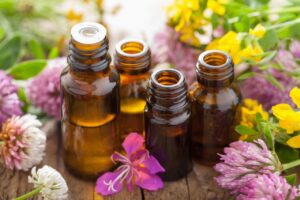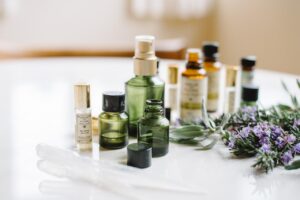Embark on a fragrant journey with “How to Make Aromatherapy Candles,” a comprehensive guide that unveils the art of crafting these aromatic masterpieces. From gathering essential materials to mastering the curing process, this narrative will illuminate each step, empowering you to create personalized candles that soothe the senses and uplift the spirit.
As you delve into this aromatic adventure, you’ll discover the secrets of selecting the perfect wax, essential oils, and containers. Learn the techniques for melting and preparing the wax, ensuring optimal fragrance release. With expert guidance, you’ll navigate the intricacies of pouring the candles, centering the wicks, and avoiding air bubbles.
Gathering Materials

To embark on your aromatherapy candle-making journey, you’ll require a collection of essential materials. These include:
- Wax:The foundation of your candle, choose from soy, beeswax, or paraffin wax based on desired burn time, scent throw, and sustainability.
- Wicks:Select wicks appropriate for your chosen wax and container size to ensure optimal burning.
- Essential Oils:The heart of your aromatherapy experience, choose oils that align with your desired scents and therapeutic benefits.
- Containers:Select heat-resistant containers that complement your candle’s design and intended use.
Choosing the Right Wax and Essential Oils
The type of wax and essential oils you choose will significantly impact the characteristics of your aromatherapy candles. Here are some considerations:
- Wax:
- Soy Wax:Eco-friendly, clean-burning, and provides a long burn time.
- Beeswax:Natural, produces a warm glow, and has a shorter burn time.
- Paraffin Wax:Affordable, longer burn time, but less eco-friendly.
- Essential Oils:
- Lavender:Calming, promotes relaxation.
- Peppermint:Invigorating, enhances focus.
- Eucalyptus:Decongestant, clears the mind.
Preparing the Wax

The first step in candle making is preparing the wax. This involves melting the wax and bringing it to the correct temperature for pouring. It is important to avoid overheating the wax, as this can cause it to lose its fragrance and become discoloured.
To melt the wax, you will need a double boiler or a microwave. If using a double boiler, fill the bottom pot with water and bring it to a simmer. Place the wax in the top pot and stir until it is completely melted.
If using a microwave, heat the wax in 30-second intervals, stirring in between, until it is completely melted.
Once the wax is melted, you need to add the fragrance oil. The amount of fragrance oil you add will depend on the strength of the scent you want. A good starting point is to add 1 ounce of fragrance oil per pound of wax.
Once the fragrance oil has been added, stir the wax thoroughly to combine. Then, pour the wax into the candle containers. Be sure to leave about 1/4 inch of space at the top of the container for the wick.
Cooling the Wax
Once the wax has been poured into the containers, you need to let it cool completely. This can take several hours, or even overnight. Do not disturb the wax while it is cooling, as this can cause it to crystallise and become cloudy.
Once the wax has cooled completely, you can trim the wicks to 1/4 inch and enjoy your aromatherapy candles!
Adding Essential Oils
Incorporating essential oils into aromatherapy candles enhances their therapeutic and aromatic qualities. Essential oils are highly concentrated plant extracts that possess unique scents and therapeutic properties. By carefully selecting and blending essential oils, you can create candles that cater to specific moods, alleviate stress, promote relaxation, or invigorate the senses.
Selecting and Blending Essential Oils
When selecting essential oils for your candles, consider their individual scents and therapeutic benefits. Experiment with different combinations to create harmonious blends. For example, lavender and chamomile are known for their calming effects, while citrus oils like lemon and orange uplift and energize.
Use a diffuser to test the scents and find combinations that resonate with you.
Ratio of Essential Oils to Wax
The ratio of essential oils to wax is crucial for optimal fragrance release. Generally, a concentration of 5-10% essential oils to 90-95% wax is recommended. This ratio provides a balanced aroma that is neither overpowering nor too faint. For stronger scents, you can increase the essential oil concentration, but avoid exceeding 15%, as it can affect the burning properties of the candle.
Pouring the Candles

Once the wax has melted and the essential oils have been added, it’s time to pour the candles into their containers. This step requires careful attention to detail to ensure that the candles are properly centered and free of air bubbles.
Centering the Wicks
- Before pouring the wax, center the wicks in the containers using a wick centering tool or a chopstick.
- Secure the wicks at the bottom of the containers with a small amount of hot glue or wax.
- Keep the wicks taut and straight as you pour the wax to prevent them from shifting.
Avoiding Air Bubbles, How to make aromatherapy candles
- Pour the wax slowly and steadily into the containers to avoid creating air bubbles.
- If air bubbles do form, gently tap the containers on a hard surface to release them.
- You can also use a heat gun or a hair dryer to gently heat the wax and release any remaining air bubbles.
Curing the Candles

Curing is a crucial step in candle-making that allows the wax to fully set and the fragrance to develop. It ensures a long-lasting burn and a consistent scent throw.
The ideal curing time for candles is between 10 and 14 days. During this period, store the candles in a cool, dry place away from direct sunlight or heat sources. The temperature should be between 60-75°F (15-24°C).
Storage Conditions
- Keep the candles in a well-ventilated area to prevent the accumulation of fumes.
- Avoid storing candles in damp or humid environments, as moisture can affect the wax and fragrance.
- Store the candles in their containers or wrap them in tissue paper to protect them from dust and debris.
Design and Presentation

Aromatherapy candles offer an opportunity for creativity and personalization. By experimenting with different containers, labels, and packaging, you can create candles that are both aesthetically pleasing and functional.
Consider using unique containers such as ceramic jars, glass vases, or even seashells. These containers can add a touch of style to your home decor and provide a vessel for your scented candle. You can also personalize your candles with custom labels that feature your own designs or scents.
Labels
- Choose high-quality paper or vinyl for your labels.
- Use clear and concise fonts that are easy to read.
- Include important information such as the scent, ingredients, and burn time.
- Add a personal touch with your own designs or artwork.
Packaging
- Use sturdy packaging to protect your candles during shipping and storage.
- Consider using eco-friendly packaging materials such as recycled paper or biodegradable boxes.
- Add a touch of elegance with ribbons, bows, or other embellishments.
By paying attention to the design and presentation of your aromatherapy candles, you can create products that are both visually appealing and functional. Experiment with different ideas and find what works best for your brand and customers.
Safety Precautions
Ensuring safety is paramount when creating and using aromatherapy candles. Follow these guidelines for a safe experience:
Proper Ventilation:Create adequate ventilation by opening windows or using a fan to prevent the buildup of fumes from essential oils.
Fire Safety
- Keep candles away from flammable materials like curtains, furniture, and paper.
- Never leave burning candles unattended.
- Extinguish candles completely before leaving a room.
Handling Essential Oils
- Avoid direct contact with skin and eyes. Use gloves and safety glasses when handling essential oils.
- Dilute essential oils with a carrier oil, such as jojoba or almond oil, before applying them to the skin.
- Store essential oils in a cool, dark place, away from children and pets.
Epilogue

The art of aromatherapy candle making extends beyond mere creation; it’s about designing and presenting these fragrant treasures. Explore creative ideas for using different containers, labels, and packaging to enhance their aesthetic appeal. Remember, safety is paramount, so adhere to the guidelines for proper ventilation, fire safety, and handling of essential oils.
Embrace the transformative power of aromatherapy candles and create a haven of tranquility in your own home.
Question Bank: How To Make Aromatherapy Candles
What type of wax is best for aromatherapy candles?
Soy wax and beeswax are popular choices due to their natural and eco-friendly properties.
How do I choose the right essential oils for my candles?
Consider the desired mood or effect you want to create. For relaxation, lavender and chamomile are excellent choices.
What is the ideal curing time for aromatherapy candles?
Allow candles to cure for at least 24 hours, or up to a week, to ensure a strong and lasting fragrance.


